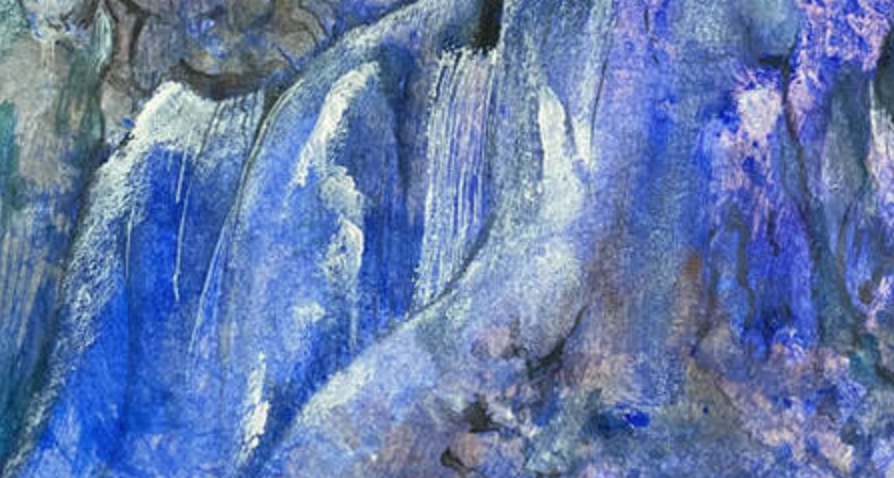Blue mountain I recently completed a piece called Blue Mountain with watercolors. Blue Mountain was created as one of my experiments. That is, it is not a painting of one of the $1 watercolor projects I am working on. Although I used a $1 watercolor paint, the sharp blue areas of the mountains were done with Daniel Smith watercolor French Ultramarine. Since 1993 Daniel Smith continues to make premium artist materials including watercolors, oil paints and a variety of auxiliary materials. Daniel Smith has certainly become well known for its extra fine watercolors and the celebrity artists that endorse these watercolors. Featuring 247 stunning colors, the widest color gamut of professional watercolor paints. Source by: https://www.artsupplies.co.uk/blog/find-out-more-about-our-top-10-best-selling-daniel-smith-colours/ French Ultramarine is a medium-to-dark warm, reddish-blue which is highly lightfast, has a medium tinting strength and shows beautiful granulation, especially on heavily textured papers. This brilliant blue is excellent for painting skies and can also be easily mixed to create fantastic greens, greys and purples. French Ultramarine is so versatile that you could make it the only blue on your palette. As an ongoing project, I am using $1 watercolor paint, but there is a clear difference in some respects, and research is needed to determine whether it is insufficient or sufficient. For one thing, one of the problems I've found so far with the $1 watercolors is that they can't produce more vivid, more saturated colors. But I am going to find a way to solve these problems little by little. Blue Mountain is a picture that embodies the image that comes from the color blue. Of course, generally saying "blue", you think of the colors of the sky and the sea, but I think of rocks and stones that radiate blue energy. And the rocks came together to become one huge mountain. In particular, the area where I live is made up of flat land, so it's hard to see a rugged mountain with a lot of rocks like this. But in Korea, these mountains are common. Geographically, mountainous areas occupy more than half of Korea's land area.(70%) After the orogeny movement that determined the topography of the Korean Peninsula took place in the Mesozoic Era, erosion has progressed through a long geological period. Because there are many hilly mountains, settlements have been established along rivers that are paired with mountains. In this way, Koreans have always been in contact with and looking at the mountains since they were born, so folk beliefs have been developed to worship them, and mountains have always been objects of artistic and aesthetic appreciation. In the neighborhood where I spent most of my time in Korea, there was a famous mountain called Bukhansan. It was a rugged mountain with beautiful valleys and rocks and dense trees. Bukhansan is the highest mountain within Seoul city boundaries. And then it could be seen from any direction in my town. Children have felt the existence of separate mountains from an early age. When I was young, I used to fly kites, wishing that kites would fly up to Mt. Bukhan. The mountain had many stories and legends created by children. Blue Mountain is the nostalgia for a childhood spent with the mountains. Like a child, I crumpled up the paper, applied paint, and pressed it on the paper like a stamp to create the shape of a mountain. In other words, it is not the shape of a mountain in the real world, but an accidental shape created by a roll of paper.
0 Comments
Leave a Reply. |
Myungja Anna KohArtist Categories
All
Archives
July 2024
|
Proudly powered by Weebly








 RSS Feed
RSS Feed